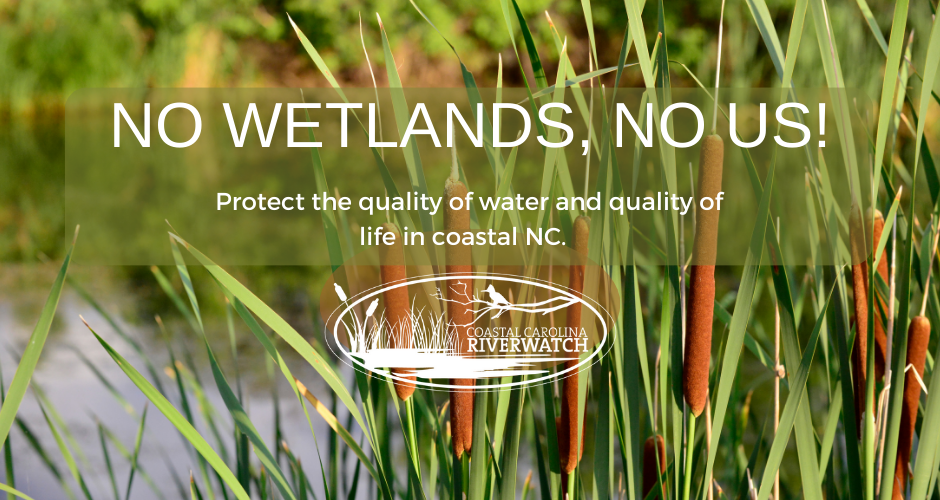In July 2023 the NC House and Senate overrode the Governor’s veto of the “Farm Bill” which included language detrimental to our state’s wetlands. This wetland provision will tie NC’s definition of protected wetlands to that of the US, which recently removed protections for about half of the county’s wetlands.
Up until now, NC had our own state-protected wetlands state protections for wetlands that buffered storm damage, absorbed flood waters, provided habitat for important fish species, and processed filter pollutants throughout the state. Now, over one million acres of the state’s wetlands are able to at risk of being filled and used as dumping grounds for developments and industry.
This reduction of protected wetlands protections will be devastating to our coastal communities. We already see sunny day flooding, ditches that never dry, and prolonged flooding from storms. If these important natural resources are removed destroyed we are losing the most cost-effective and efficient buffer that any land or engineering could provide. Wetlands are also critical to the coast’s economy. Millions of people benefit from the tourism and fishing industries that are dependent on our wetlands for fish habitat and recreation.
The Environmental Protection Agency (EPA) and the Army Corps of Engineers just released a final rule amending the January 2023 “waters of the United States” rule to conform with the Supreme Court’s decision in Sackett v. EPA limiting the scope of wetlands and other waters covered by the Clean Water Act.
As a result of Sackett and the new rule, wetlands are now covered by the Clean Water Act ONLY if they have a continuous surface connection to a relatively permanent, standing, or continuously flowing body of water. This Washington Post story quoted an unnamed EPA official for the estimate that up to 63 percent of wetlands by acreage in the United States may lose protection under this new standard.
The new rule confirms the agencies’ view that Sackett applies to streams, not just to wetlands. The unnamed EPA official in the Washington Post story estimated that 1.2 million to 4.9 million miles of ephemeral streams lose protection under Sackett and the new rule.
The new rule does not define the two key terms that make up the relatively permanent standard: “relatively permanent” and “continuous surface connection.”
The new rule is effective in only 23 states. In those jurisdictions (plus U.S. territories and the District of Columbia), the agencies will apply the January 2023 rule as amended by the new rule. In the other 27 states, courts have enjoined the January 2023 rule, so the agencies will apply the pre-2015 regulatory framework as limited by Sackett. Here is a map (from this EPA page) showing where each framework applies (see map below).
(Source: SELC) 
What can you do?
Click here to Join CCRW’s Advocacy Working Group to learn how to advocate for wetlands in your community.
Click here to Contribute to CCRW, support the work to protect wetlands in North Carolina.

